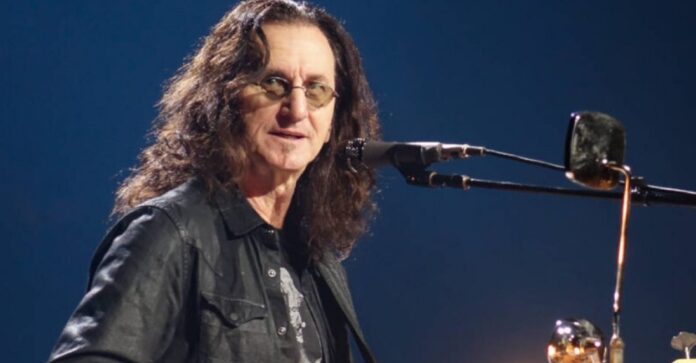A Fresh Look at Rock’s Unsung Bass Heroes
Geddy Lee has long been celebrated as one of the most technically gifted bassists in rock history, a musician who transformed the expectations of what a bass guitar could accomplish. Yet, despite his status as a progressive rock pioneer, Lee says there is one bassist from the 1960s who has never been given the recognition he truly deserves.
This revelation came during an in-depth conversation about bass influences and musical evolution—showing once again how deeply Lee values melody, tone, and creative expression over simple rhythmic support.
Why Melody Defines a Great Bassist for Lee
Throughout his career with Rush, Lee consistently pushed the boundaries of bass performance. He has openly cited inspirations—Chris Squire, John Entwistle, James Jamerson, Jack Bruce, and Paul McCartney—but says the true measure of a bassist is their melodic sensitivity.
“The ability to enhance a song on a deeper, almost subterranean level has always mattered most to me,” Lee explained.
“I gravitated toward bassists who added a layer of musical interest that only reveals itself on repeated listens.”
For Lee, a bassist should be part of the melodic architecture, not merely a background instrument. This philosophy shaped Rush’s sound and influenced countless modern players.
Before Geddy Lee Changed Bass Forever
In the late 1960s and early 1970s, bass guitar had not yet reached its full musical potential. Although McCartney and Jamerson elevated bass lines into art, many rock bands still treated bass as a supportive rhythm instrument.
Then came Rush.
Lee’s role expanded far beyond traditional bass playing. In a power trio format, he carried melodic responsibility alongside Alex Lifeson’s guitar work, creating an intricate sonic landscape — most notably on tracks like “La Villa Strangiato”.
But before Lee became the face of modern rock bass, he was a young listener absorbing the raw, experimental sounds of psychedelic rock.
The Surprising Bassist Geddy Lee Calls Underrated
During an interview with Music Radar, Lee singled out a name that often gets overshadowed in discussions of legendary bassists:
Jack Casady of Jefferson Airplane
Casady played a crucial role in shaping the sound of Jefferson Airplane during the Haight-Ashbury era, contributing a gritty, aggressive tone that helped define the psychedelic movement.
According to Lee:
“Jack Casady was always very underrated. Listen to his playing on early Jefferson Airplane records or on the live album Bless Its Pointed Little Head. His tone was huge—he pushed the entire band forward.”
For Lee, Casady’s contribution to the sonic identity of the 1960s cannot be overstated. Even as Jefferson Airplane shifted lineups repeatedly, Casady’s presence made the band’s formative era unique.
Casady’s Deep Influence on Modern Bass Tone
Casady was known for creating a growling, almost guitar-like distortion — a sound far more aggressive than many of his contemporaries. His approach blurred the boundary between rhythm and melody, encouraging the bass to take up more sonic space.
This style influenced future heavy rock acts, from Blue Cheer to modern stoner rock and even early metal.
Lee clearly absorbed that philosophy:
- Pushing the bass forward in the mix
- Using dynamic, melodic runs
- Filling the gaps between guitar and drums
- Treating the bass as an expressive, lead-capable instrument
Without Casady’s pioneering tone experiments, Lee says Rush’s sound may have developed very differently.
A Legacy Hidden in Plain Sight
While rock history praises names like McCartney, Entwistle, Squire, and Jamerson, Casady often remains on the sidelines. Yet his work helped build the foundation for entire genres and influenced musicians who would become global icons.
Geddy Lee’s admiration puts a spotlight back on Casady—perhaps exactly where it should have been all along.
For listeners unfamiliar with Casady’s catalog, Lee recommends starting with:
- “White Rabbit” (classic psychedelic bass tension)
- “Bless Its Pointed Little Head” (raw, live energy)
- Early Jefferson Airplane studio recordings
These tracks reveal the heavy growl, melodic phrasing, and fearless experimentation that left such a strong impact on Lee.
Conclusion: The Hidden Architects of Rock
Geddy Lee’s comments serve as a reminder that rock’s history is shaped not only by the names everyone knows, but by musicians whose innovations subtly changed the trajectory of modern music.
By praising Jack Casady as rock’s most underrated bassist, Lee highlights a lineage of creativity that spans generations — from the psychedelic era to progressive rock and beyond.
Casady’s influence is woven through Rush’s discography and through countless bassists who followed. And thanks to Lee’s recognition, the world is finally paying attention to a forgotten pioneer.




